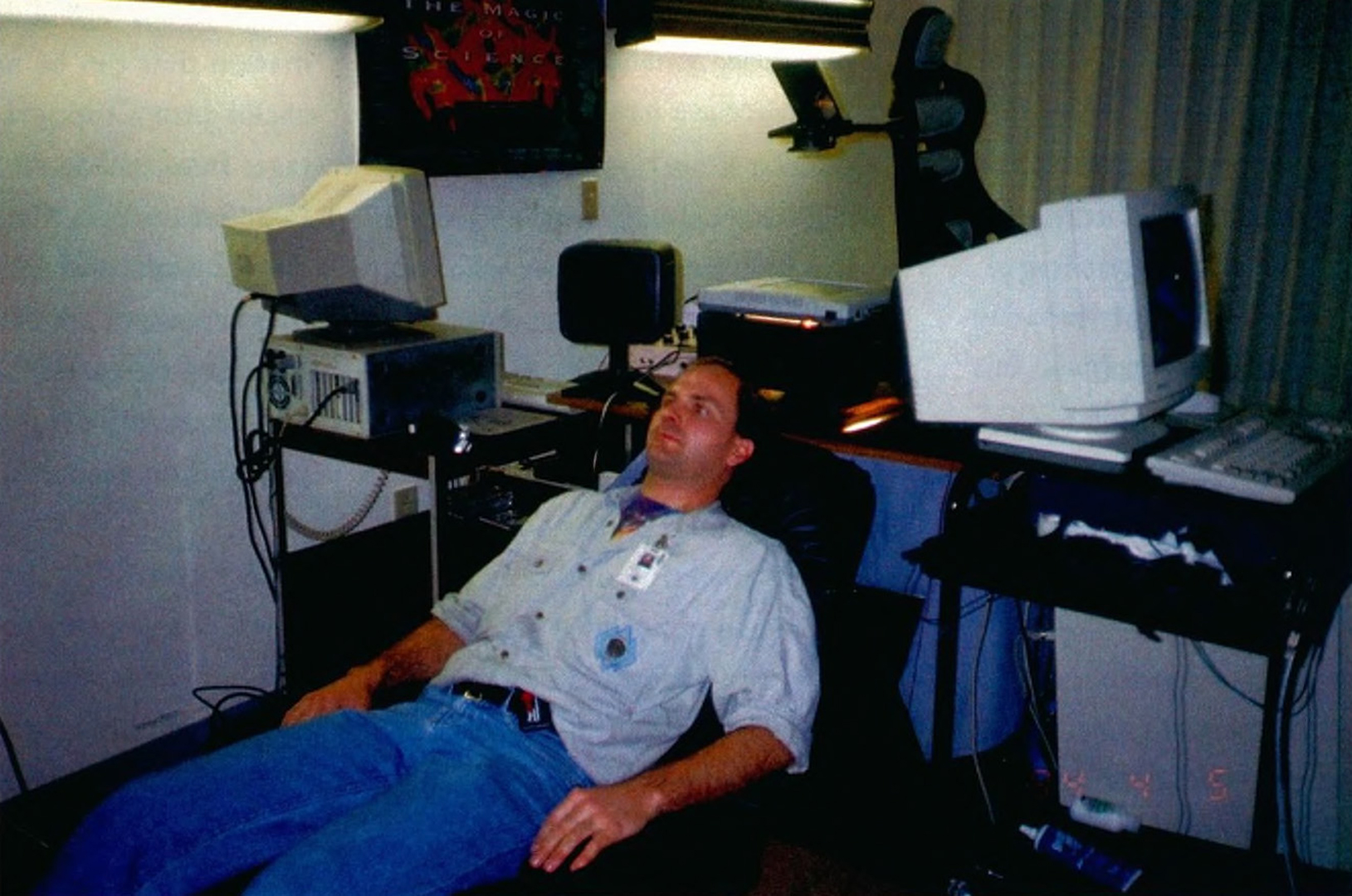“Human/Dolphin Virtual Reality World Concept” by Kaul
Conference:
- SIGGRAPH 1994
-
More from SIGGRAPH 1994:


Type(s):
Entry Number: 06
Title:
- Human/Dolphin Virtual Reality World Concept
Program Title:
- The Edge
Presenter(s):
Collaborator(s):
Description:
The Human/Dolphin Virtual Reality World Concept is a vision of a world – a computer-generated simulation of an environment – where humans can experience a visual and auditory perceptive space with a dolphin.
This project is a cooperative enterprise involving a group of scientific and artistic researchers who are applying the cutting edge of technology to a common goal: advancing human intelligence through communication with other advanced intelligence. It required development of interfaces that are currently used in a medical rehabilitation center to enable severely disabled individuals to interact in artificial environments. An extension of this research is the design of environmental systems that support experiential interaction with information systems to monitor and promote good health. Collaborators on this project have been featured in popular publications such as MacWorld and Wired and covered by popular media through presentations on Beyond 2000.
For SIGGRAPH 94, the Human Performance Institute has extended these interactive technologies into areas of interspecies communication. A goal of the Human/ Dolphin Virtual Reality World Concept is to make visible an experience that is invisible to the general public: “being dolphined.” Real-life sensorial communication with a dolphin creates understanding of human multi-sensory capabilities.
The virtual environment is an underwater, multi-dimensional, experiential environment designed for one participant at a time. Attendees can spend three to five minutes in the Human/ Dolphin Environment (HDE), where they experience the technical advancement of the research and the phenomenon of communication with another intelligent species. The visual and auditory aspects of this perceptive space will be controlled by the user through neurological data transmitted through electrodes on the user’s body to a computer and then represented as a simulation on a screen in front of the user in an underwater virtual space. Each hour, 10 attendees participate by entering a room-type space with electrodes placed on their bodies. They are comfortably seated in a vibrasonic chair in front of a large screen with four speakers around them. Hardware components for the technical execution of the simulated environment are incorporated into the room in a semicircle-like panel behind the user. This panel includes an IBM 486. Mac Quadra 660AV, the BioMuse, IBVA with MIDI interface, and control devices, monitors, and adjustable light.
Interactive and virtual technologies represent a fundamentally new way for people and computers to interact. As the capacity of computers to receive, process, and transmit massive amounts of information continually increases, technologies gain new powers to translate natural human actions of communication, such as thinking, speaking, and moving, into computer commands and information displays. Practical extensions of this symbiotic process linking human and computer intelligence are only just beginning to be perceived by the forerunners of art and technology, but with the technological systems currently under development, perception is the key ingredient for simulation.




